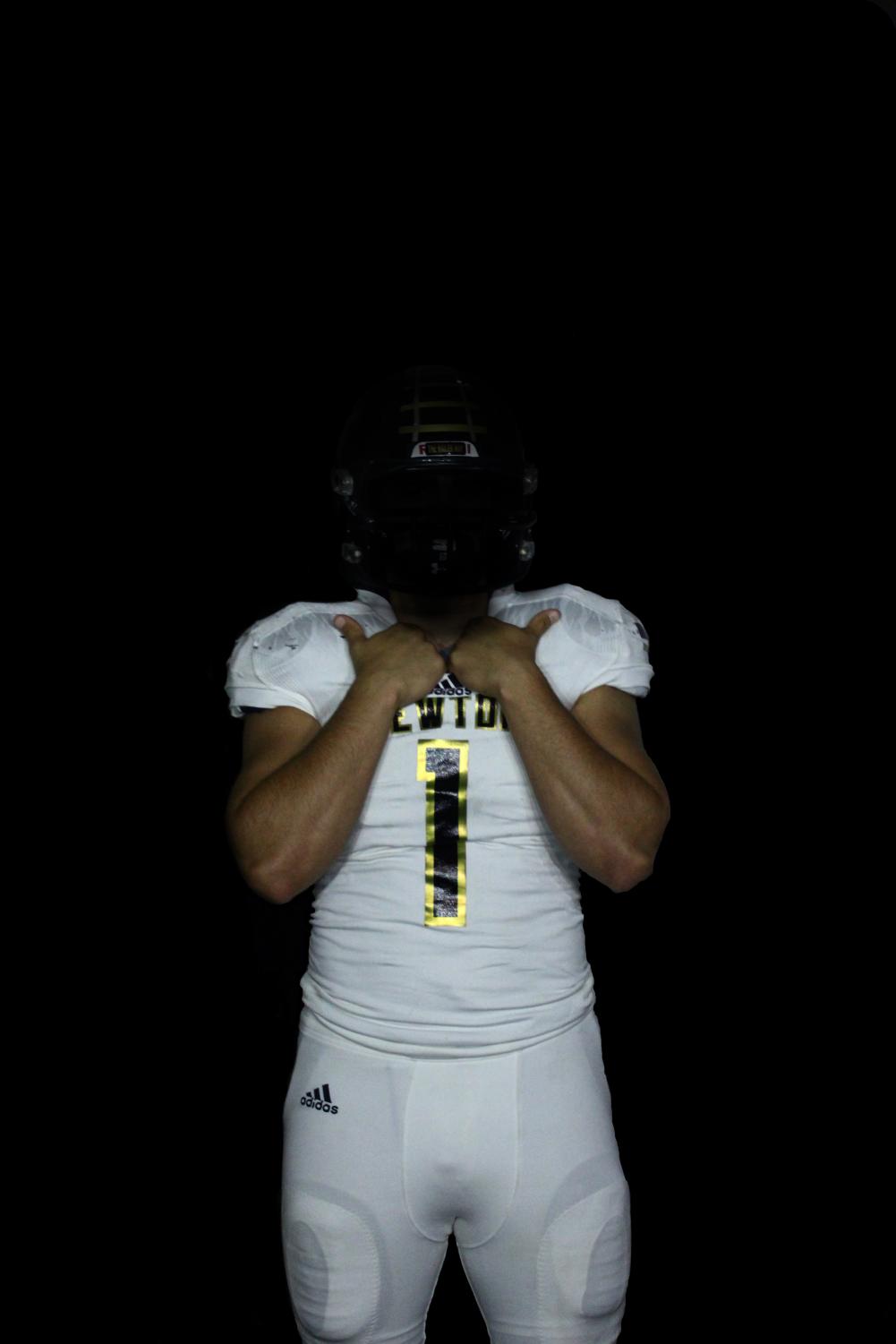Going in head first
Player suffers multiple concussions, protocol impacts team
More stories from Kaeden Thurber
Concussion training has always been prevalent in school athletics, but this year it has reached a larger audience. For years, select sports have gone without concussion training, this year, however, all sports were required to watch informational videos about concussions symptoms and procedures.
The Kansas State Department of Education (KSDE) has required football to undergo more rigorous concussion training. This year to meet the new regulations, football concussion training began earlier than past years. Players underwent numerous tests, measurements, and learning how to recognize the symptoms of concussions. Head football coach Chris Jaax believes this is an important informative procedure for all students.
“In all, I think it’s one of those things that’s important for education in general. It makes sense that as a society it’s something we want to make sure we’re informed about,” Jaax said.
The baseline concussion training is aimed to help athletes recognize and report symptoms of a concussion in themselves and or other players. The virtual testing measures player reaction time, memory capacity, speed of mental processing and executive functioning of the brain. Goals for this training include informing students and staff of concussions and their repercussions.
“If you did this training you can see what level your athletes are at and you get to know them a little bit better as an athletic trainer,” athletic trainer Elizabeth Brown said. “You also get to see what level they’re at and when they sustain a concussion you can watch them get back to that as well.”
According to the KSDE website, any athlete who has recently had a concussion is required to be removed from that game and from practices. The athlete will not be cleared to participate in any games or practices until a health care provider has cleared them. KSDE has required any student-athlete suffering more than three concussions to sit out that season.
“It’s something you make sure you go through the right steps and procedures for recovery. You don’t want to be caught in a situation where your behavior causes you permanent damage,” Jaax said.
Senior Jacob McFarlane suffered two concussions his freshman year, as well as a blow to the head his sophomore year that wasn’t technically considered as a concussion. This resulted in him sitting out his junior season.
“I was pretty disappointed, I grew up playing football and then having to sit out my junior year kind of was disappointing. It was a set back from senior year,” McFarlane said.
Despite past concussions, McFarlane went out for football his senior year. During a home game against Campus, he suffered a blow that resulted in his departure from the field for the rest of the year.
“After having my first two or three concussions it softened my brain and made me more vulnerable towards concussions. This last one I had against Campus wasn’t because of a serious hit but my head was starting to swell and push against my skull.” McFarlane said.
Beginning his senior year with low motivation McFarlane had not planned on joining football. However, after his friends encouraged him to participate he was in high spirits.
“Everyone that I grew up playing football with pretty much was just like ‘hey it’s your senior year, just got to go out’,” McFarlane said.

This is Faye's third year on staff and serves as the Editor-in-Chief. Faye is President of the Newton FFA Chapter officer team, as well as multiple 4-H...










